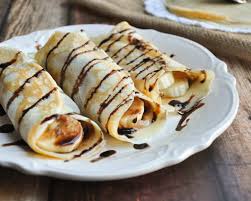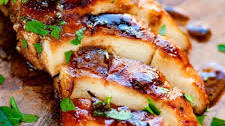Delightful Recipe for a Classic British Victoria Sponge Cake

The Perfect Recipe for a Delicious Lemon Drizzle Cake
Indulge in the zesty goodness of a classic Lemon Drizzle Cake with this simple yet scrumptious recipe. Whether you’re hosting a tea party or simply craving a sweet treat, this cake is sure to delight your taste buds.
Ingredients:
- 225g unsalted butter, softened
- 225g caster sugar
- 4 large eggs
- 225g self-raising flour
- Zest of 2 lemons
- Juice of 1 lemon
- 100g granulated sugar
Instructions:
- Preheat your oven to 180°C (160°C fan) and grease a loaf tin.
- In a mixing bowl, cream together the butter and caster sugar until light and fluffy.
- Add the eggs one at a time, beating well after each addition.
- Gently fold in the self-raising flour and lemon zest until combined.
- Pour the batter into the prepared tin and bake for 45-50 minutes or until golden and a skewer inserted comes out clean.
- While the cake is baking, mix together the lemon juice and granulated sugar to make the drizzle.
- Once the cake is out of the oven, prick it all over with a skewer and pour over the lemon drizzle while it’s still warm.
- Allow the cake to cool in the tin before removing and serving slices with a dollop of cream or ice cream.
Enjoy this delightful Lemon Drizzle Cake as a perfect accompaniment to your afternoon tea or as a tasty dessert after dinner. Its tangy flavour and moist texture are bound to make it a firm favourite among family and friends!
Five Essential Tips for Perfecting Your Recipe Every Time
- Always read the recipe thoroughly before starting to ensure you have all the ingredients and equipment needed.
- Use fresh, high-quality ingredients for the best flavour in your dish.
- Follow the measurements and instructions carefully to achieve the desired outcome.
- Don’t be afraid to experiment with different herbs, spices, or cooking techniques to personalise the recipe to your taste.
- Taste as you go and adjust seasoning if necessary to perfect your dish.
Always read the recipe thoroughly before starting to ensure you have all the ingredients and equipment needed.
Before embarking on any culinary adventure, it is essential to heed the wise advice of reading the recipe thoroughly beforehand. By familiarising yourself with the ingredients and equipment required, you can ensure a smooth and successful cooking experience. Checking that you have everything on hand not only saves time but also prevents any last-minute dashes to the store mid-preparation. So, take a moment to peruse the recipe, gather your tools, and set yourself up for cooking success from the very start.
Use fresh, high-quality ingredients for the best flavour in your dish.
For a truly exceptional culinary experience, it is essential to utilise fresh, high-quality ingredients when preparing your dish. The integrity and richness of flavours that come from using the finest produce can elevate the taste profile of your creation to new heights. Whether it’s vibrant vegetables, succulent meats, or aromatic herbs, sourcing top-notch ingredients ensures that every bite is a delightful sensation for your taste buds. Embrace the essence of premium quality ingredients to unlock the full potential of your cooking and deliver a dining experience that is nothing short of extraordinary.
Follow the measurements and instructions carefully to achieve the desired outcome.
It is crucial to follow the measurements and instructions meticulously when preparing a recipe to ensure the desired outcome. Each ingredient plays a specific role in the overall taste and texture of the dish, so precision is key. By adhering closely to the specified quantities and steps, you can enhance the flavours and consistency of your creation, ultimately leading to a successful and delicious result that will impress both yourself and those you are cooking for.
Don’t be afraid to experiment with different herbs, spices, or cooking techniques to personalise the recipe to your taste.
When it comes to cooking, don’t be afraid to get creative and experiment with various herbs, spices, or cooking techniques to tailor the recipe to your unique taste preferences. Adding a pinch of this or a dash of that can elevate the flavours and bring a personal touch to your dishes. Whether you prefer a hint of spice, a burst of freshness from herbs, or a new cooking method to enhance texture, embracing experimentation in the kitchen can lead to exciting culinary discoveries that cater specifically to your palate.
Taste as you go and adjust seasoning if necessary to perfect your dish.
When following a recipe, it’s crucial to taste as you go and adjust the seasoning accordingly to enhance the flavours of your dish. By regularly sampling your creation throughout the cooking process, you can ensure that the seasoning levels are just right, allowing you to perfect the taste and achieve a delicious outcome. This simple tip not only helps in creating a well-balanced and flavourful dish but also allows you to tailor the seasoning to your personal preference, resulting in a culinary masterpiece that will delight your palate.







